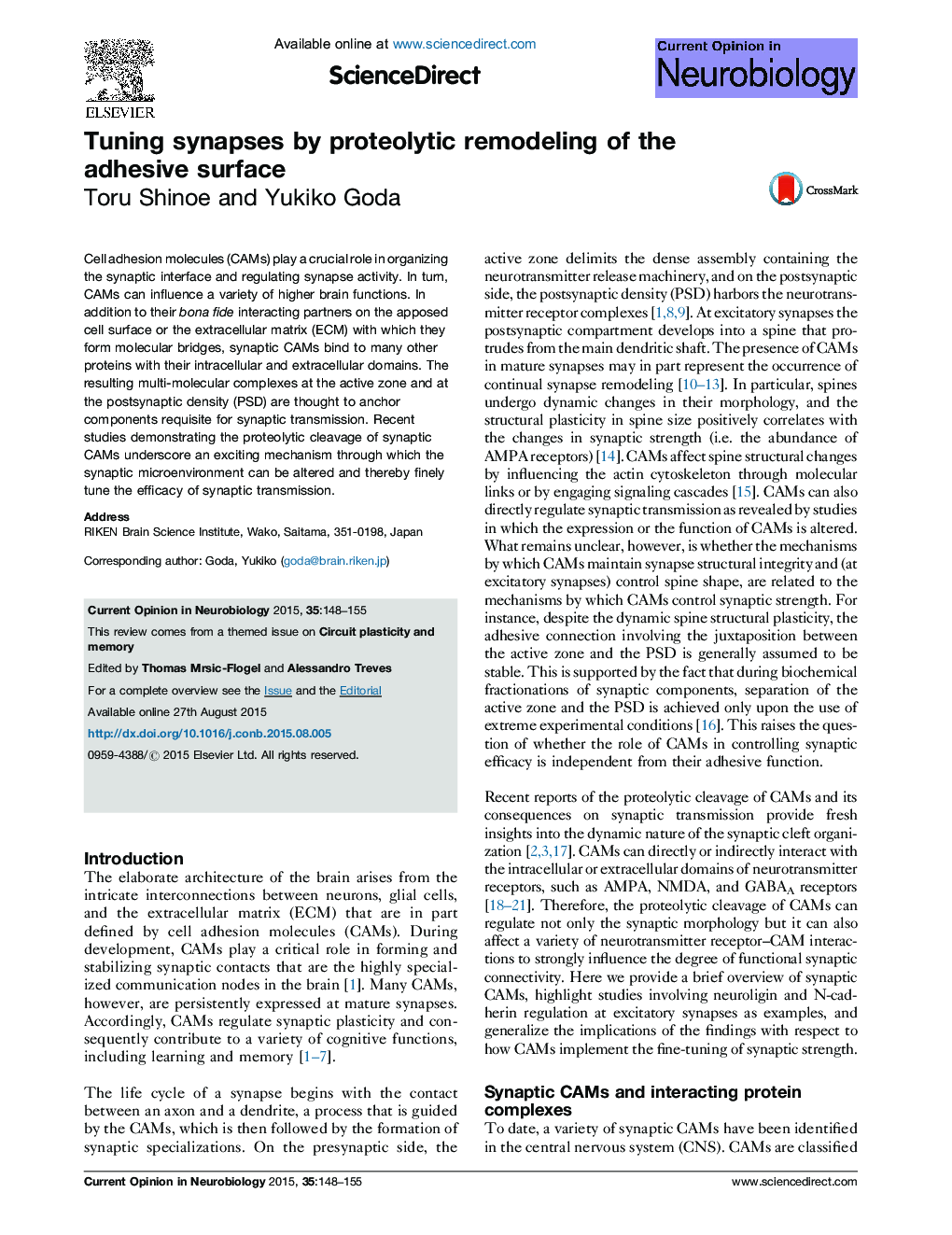| Article ID | Journal | Published Year | Pages | File Type |
|---|---|---|---|---|
| 6266390 | Current Opinion in Neurobiology | 2015 | 8 Pages |
â¢Synaptic CAM complexes organize the active zone and the postsynaptic density.â¢Extracellular proteases cleave synaptic CAMs in an activity-dependent manner.â¢Synaptic CAM cleavage induces intracellular signaling and alters synaptic strength.
Cell adhesion molecules (CAMs) play a crucial role in organizing the synaptic interface and regulating synapse activity. In turn, CAMs can influence a variety of higher brain functions. In addition to their bona fide interacting partners on the apposed cell surface or the extracellular matrix (ECM) with which they form molecular bridges, synaptic CAMs bind to many other proteins with their intracellular and extracellular domains. The resulting multi-molecular complexes at the active zone and at the postsynaptic density (PSD) are thought to anchor components requisite for synaptic transmission. Recent studies demonstrating the proteolytic cleavage of synaptic CAMs underscore an exciting mechanism through which the synaptic microenvironment can be altered and thereby finely tune the efficacy of synaptic transmission.
